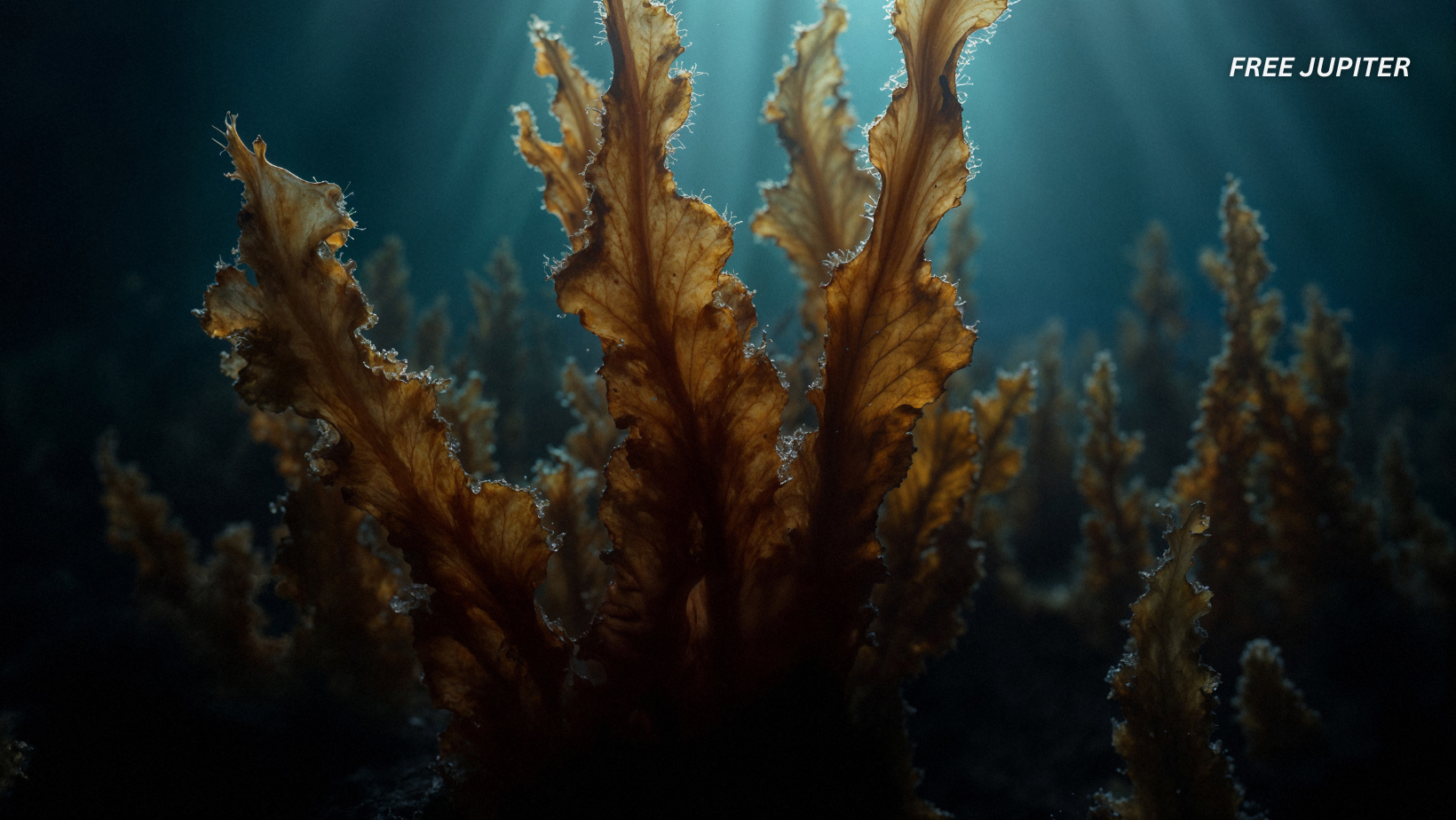Friendly Note: FreeJupiter.com shares general info for curious minds 🌟 Please fact-check all claims—and always check health matters with a professional 💙
Picture this: you’re handed the blueprints of an entire planet but only allowed to study a patch the size of your local park. You’re then expected to make major decisions about the whole world based on that tiny snippet. That’s more or less what’s happening with Earth’s deep oceans.
Despite covering most of the globe and playing a central role in climate and ecological systems, the deep seafloor remains largely a mystery. So far, humans have visually examined only about 0.001% of it., according to PBS. To translate that into more familiar terms, that’s an area just slightly bigger than the state of Rhode Island. The rest an overwhelming 99.999% remains unseen, uncharted, and widely ignored in global conversations around environment, resource use, and planetary health.
While many look to the cosmos as the next frontier, perhaps the most enigmatic realm lies not above, but beneath us hidden under immense pressure, pitch-black waters, and crushing obscurity.
A Mind-Boggling Measurement of the Unknown
Let’s start with some geography. Roughly 71% of Earth’s surface is water. Of that, the area classified as the “deep ocean” anything more than 200 meters below the surface accounts for around 66% of the planet.
So far, our eyes have seen just a sliver of this underwater world. Specifically, a study conducted by the Ocean Discovery League along with several collaborators compiled over 43,000 deep-sea expeditions into the most thorough visual map yet assembled of the ocean floor. The result? All those dives combined cover less than 1,500 square miles.
For scale, if Earth’s deep seafloor were expanded to the size of the entire planet, we’ve explored an area no bigger than a speck. Actually, smaller than a speck more like a freckle.
Compounding the problem is the quality of our records. Around 30% of the footage we do have was shot before 1980, often in grainy black-and-white. These clips are charmingly retro but far from useful for modern scientific analysis.
Dr. Katy Croff Bell, who led the study, notes that at the current pace of exploration, it could take upwards of 100,000 years to fully document the deep seafloor visually. Let that sink in. We’re talking tens of thousands of human lifetimes before we even finish mapping our own backyard.
Read more: New Study Reveals How The First People To Inhabit America Got There
The Ocean’s Invisible Contributions
Out of sight should never mean out of mind. The deep sea, though invisible to most, quietly performs vital roles in sustaining life on Earth.
For one, it’s a major carbon sink. It locks away massive quantities of carbon dioxide, keeping the atmosphere from overheating. Disrupting this fragile balance could have global consequences, hastening climate shifts we’re already struggling to contain.
It’s also an incredible wellspring of biodiversity. Scientists estimate that Earth hosts between 700,000 to one million marine species, and at least two-thirds have yet to be named, studied, or even seen. And that’s just the multicellular life. When it comes to microbes, the numbers likely climb into the millions.
Among these unknown organisms could be bacteria with novel medicinal properties or sea creatures with entirely new biochemistries. The next major cure or medical innovation might be swimming somewhere in total darkness, tucked into a hydrothermal vent.
Beyond its role in biology, the deep ocean regulates nutrient cycles, helps generate oxygen, and affects climate patterns by moving heat around the globe. Deep ocean currents influence the weather you experience on land even if that land is thousands of miles from the sea.
Why So Much Remains Unexplored
Given that we’ve sent probes to the surface of Mars, why haven’t we cracked the code of our own oceans?
It’s not for lack of interest. The challenges are mostly practical, and colossal. The deep ocean is one of the harshest environments on the planet. Below 200 meters, there’s no sunlight. The temperature drops dramatically, and pressure climbs to levels that would crush standard equipment like a soda can under a steamroller.
Submersibles designed to operate at such depths must withstand conditions about 1,000 times more intense than what we feel at sea level. Not surprisingly, only about 10 vehicles on Earth are qualified to go that deep. Deploying them requires substantial infrastructure: research ships, specialized crews, and a budget that can stretch into the millions.
Because of this, deep-sea expeditions are mostly a luxury item. A handful of nations—primarily the United States, Japan, France, Germany, and New Zealand—have conducted nearly all of the documented missions to date. Between them, they account for 97% of deep-sea dives.
That imbalance means that most of the ocean has never been studied firsthand. Entire regions remain blank spots on the map.
Read more: Real-Life Spider-Man? Scientists Genetically Engineer Spider That Spins Glowing Red Silk
What’s at Risk
With commercial interest growing in the deep sea we’re venturing into areas we barely understand. These underwater territories hold resources that power electric vehicles and mobile devices, sparking a race to extract them before someone else does.
But this gold rush comes with steep environmental risks. Damaging or removing ecosystems we haven’t even documented could mean losing not only species but also vital natural functions that keep the planet stable.
It’s like letting someone strip-mine a rainforest without ever stepping inside or cataloging what’s there.
As Dr. Bell put it, we lack the basic foundation to make informed decisions about what we’re doing to the deep ocean. And when foundational knowledge is missing, the consequences can be unpredictable and irreversible.
Shifting the Lens of Exploration
So, what would it take to shift from ignorance to insight?
First, broadening participation is key. Deep-sea research has long been dominated by countries with big science budgets. But ocean health affects all nations, especially coastal and island communities that depend on marine ecosystems for food and weather stability.
Expanding access to deep-sea technologies—through international partnerships, open-source data, and affordable equipment—could allow a wider range of scientists and countries to contribute. Think of it as democratizing exploration.
Second, we need to rethink the reasons why we explore. It’s not just about economic gain or scientific curiosity. It’s about survival, innovation, and stewardship. The deep ocean is an untapped reservoir of knowledge that could transform everything from climate policy to medicine.
Finally, it’s time to act with urgency. We don’t have 100,000 years to catch up. As development and industrialization march forward, so too must our understanding of what lies beneath.
Read more: New Dinosaur Discovery May Be the ‘Missing Piece’ in the Cancer Cure Puzzle
The Sea Beneath the Surface
The ocean’s surface glints with sunlight and reflects the sky, but its true story lies in the silence below. There, in the cold, pressurized darkness, Earth’s secrets remain shelved—waiting for someone to open the books.
We are custodians of a planet whose most vital system remains largely unread. Whether for the sake of discovery, protection, or basic survival, now is the time to dive deeper—not just literally, but metaphorically.
If we’re serious about understanding life on Earth, we must look downward, not just outward. Beneath the waves lies a world that may just hold the answers to questions we haven’t yet thought to ask.










